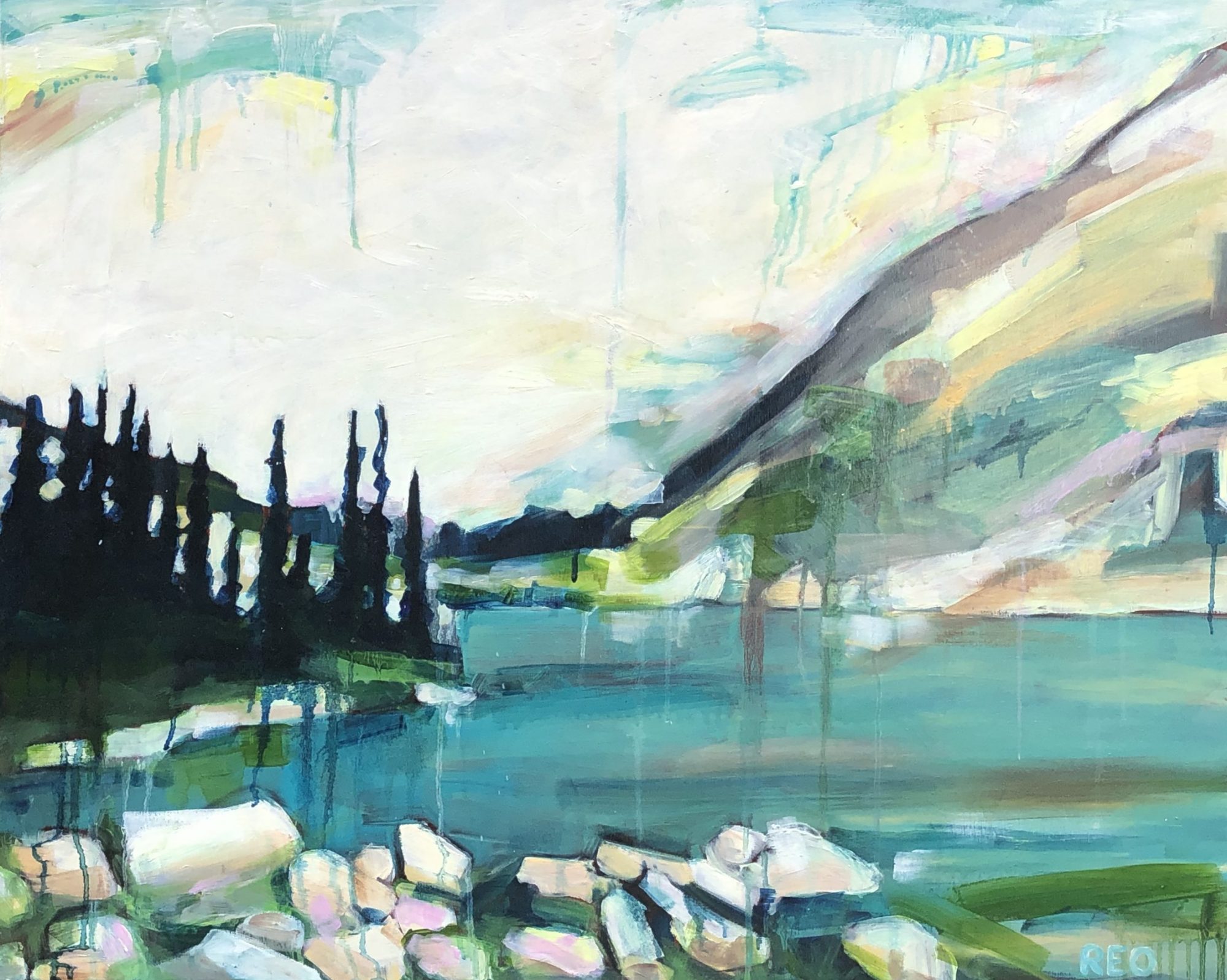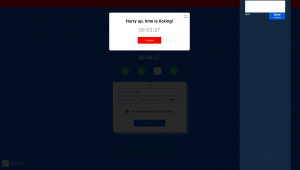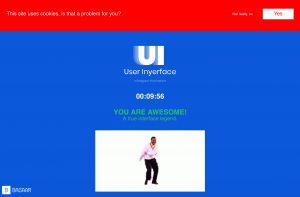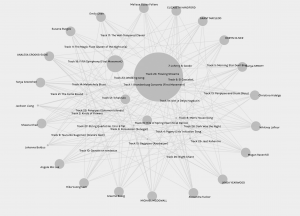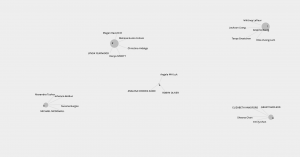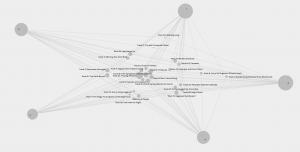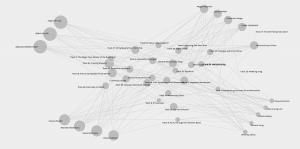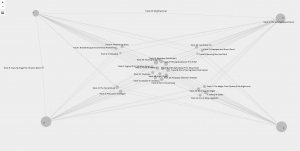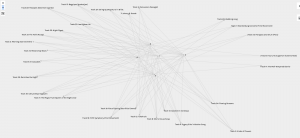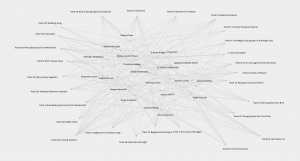2051 : A speculative narrative about the future of the “Hyperlink”
The gradual, but steady increase of light from my window gently nudges me from sleep as the tint morphs from my preferred night time shade to the standard purplish hue of the UV 500 protection glass. As I sit up, stretching and twisting my neck to the side to release a bit of stiffness, I notice that I have messages waiting, but nothing marked as urgent. They can wait until I am more alert and ready to connect with others.
I luxuriate in the morning stillness, not wanting to break the silence. Then I quickly inhale and wince a little as I recall that I have an early class today and cannot afford to dally. I move swiftly into the shower, activating my internal sound implants (ISI’s) with a firm tap behind my right ear as I place my multi-interface glasses across my nose . I start sifting through the messages that have accumulated during my sleep, smiling wryly as I see yet another midnight missive from one of my nocturnal students. Tye isn’t really nocturnal, but seems to do most of their learning while I am sleeping. I skip to this message immediately, as Tye is often the first to notice broken or stolen data links within our learner interface.
With a quick eye swipe and a blink, I select this message and it plays in my preferred Augmented Reality (AR) style setting. I enjoy seeing the students’ avatars imposed into my home, like little cartoon sprites. Whether they are strangely dry as I shampoo my hair (like this morning) or standing in my cup of tea, these holographic figures help to make me feel connected to the students that I have never, physically, shared a space with. In this brief message, complete with artificially imposed gestures, Tye alerts me to the latest hijacking of our course content and my mind wanders again to Tye’s identity.
Like so many of my students, Tye has kept their gender, their location, their appearance and likely even their voice to themselves. The data is stored somewhere, but our government has become so protective of its citizens, that very few could have access to it. Where once identity was thought to be key to forming relationships and enhancing learning, we are now well aware that one’s personal information can be easily mined for profit and true equality exists only in anonymity. All humans are susceptible to biases and it will take many generations of imposed global equality to remove thousands of years of practice.
As I move from the shower to my closet, I orate and send a quick note back to Tye, assuring them that I have received the message and will repair the link. I use my regular voice and my default avatar. While everyone is in hiding, I’ve decided that the best way to stay hidden is in plain sight. My avatar looks exactly like me, sounds exactly like me and visits places around the world that I have always wanted to see. It is so obviously me, that authorities would think it an obvious fabrication or deem me completely naive.
After dressing, I set up a cup of tea to steep in the kitchen area and turn towards the large wall that separates my apartment from the adjacent one. I really am quite indifferent about tea, but need this time built into my daily routine. My private work wall is the same as the others in my small living area, the only exception being that it is not externally visible at any angle, through any window. It is adorned with a large and simple abstract painting, painted by me, that is comprised of subtle colour transitions from top to bottom and side to side. It is strikingly calm as the colours are almost identical in value. In fact, to a truly colour blind individual, it would appear to be a completely solid or singular shade.
Here, in this spot, I remove my MI glasses, gently massage my nose and put on the plain looking sunglasses that were sitting next to my wide brim hat and UV gloves on the counter. I pick up the cup of tea, blow across the top of it and gently press my right index finger to the rim of my sunglasses to activate the hidden visual projection feature. The painting now glows like an antique, backlit computer screen and I again appreciate how far technology has evolved in my relatively short and, as yet, insignificant life span.
To think, people were once connected around the world, with just a simple click of a button. My mom would tell me stories about handheld, miniature computers that even children could use and walk around with. How wifi and bluetooth connections were common place and free, and all the continents were digitally linked. It wasn’t perfect. Children were stalked, cyber crimes persisted and identities were stolen. There was even a “dark web” that connected criminals and Facebook was used to create social connections, to help people stay in touch with each other. It sounds so alien from the reality of today.
I am conscious of the time. I load the Canadian Learning Interface (CLI), log in with the ghosted M.I. glasses that are designed to mimic the government algorithms. With a few simple gestures I remove the external link that I so carefully installed the evening before, sign out and resign myself to trying again next week.
Most instructors would love to have a student like Tye. I, however, wonder again about their identity. It can’t be a coincidence that they are always the first to come across the renegade links, can it? Last semester, my carefully crafted links enriched the learning of dozens of students. Hopefully, mentally liberating them from our country’s circuitous and politically stale feedback loop.
As I sip on the hot tea, which fogs my sunglasses, I think about how it has been almost 25 years since the destruction of the dark web. An event which was followed by seven years of progressively less ethical and legal ability to govern the world wide web as societies focused their resources on reacting to the increasing number environmental disasters and sicknesses that plagued our globe.
I remove the sunglasses, place them gently back on the counter, finish the hot tea and put the government issued MI glasses back onto my face, where they relink instantly to the ISI’s. I leisurely amble from behind my kitchen peninsula to the middle of the living room. I stop in the well worn spot where the violet-tinted sun beams warm the floor beneath my feet as I switch the glasses to full VR (virtual reality) mode and prepare to greet my students as they arrive. This morning’s seminar is a lesson on how to mix and blend images and colours and imbed educational information into images to facilitate deeper learning challenges for the 21st century student.
The images are predominantly stock images, and the data is prescreened and pre-approved. My students will be able to upload their own images, should they choose to give up the ownership of them, but they will not be able to create their own data sets, nor can they link to any data outside of Canada. Given the constraints, I genuinely question the CLI’s use of the term deeper. It has been seventeen years since the various countries assumed the governance of the internet activities of their citizens and fifteen years since the disconnection of all the major transcontinental network cables.
I wiggle my bare toes in the sun, and press them deeper into the soft filaments that curl from the top of my neural network mat, yet another perk of working in education. I gently exhale as my students begin to materialize in my space. I have set today’s lesson in Norman Rockwell’s studio, as depicted by the artist in his numerous self-portraits. I secretly smile to myself as I enjoy the subversive contrast of teaching a highly censored curriculum in the creative space of a long dead human rights activist.
The clock flicks to 7 am in the exact moment that Tye arrives. All are there. “Good morning, class,” I begin.
______________________________________________________
Tye leans back in her chair. Her avatars are in place and currently viewable in dozens of different classrooms and in equally as many forms. This algorithm is her best yet and she has been amazed with how quickly it has learned to sort data, create personas and study the patterns of the instructors. She knows she is close to a breakthrough; she has been patient and was again rewarded with the discovery of an external link last night.
Perhaps today she will be able to trace it backwards through the software? There must be a digital footprint, a way to connect it to the rebels. Tye yawns, and manually adjusts the setting that keeps the algorithm on time. Someone might be suspicious if it is too much like clock work. With a satisfied stretch she rises to make herself a cup of tea, mentally preparing for another long day of sorting through data and shoring up leaks.
_______________________________________________________
The narrative above feels like it expanded and grew as I typed. It is far longer than I intended and I’ve dedicated so much time to the research parts already that I am hesitant to start my second narrative. Instead I will write briefly about the premise.
My second imagined or alternate future of the hyperlink is based on the expansion of the link to aid in moving to a paperless society. This is a future with high density living and vast expanses of forests and farmland. With knowledge at our fingertips and the ability to link to targeted learning, scholars and elders, we no longer repeat the same mistakes. Technology and AI evolve to be so accurately predictive, that catastrophic events are avoidable and the focus has shifted to the healing of our planet and the betterment of all humans.
